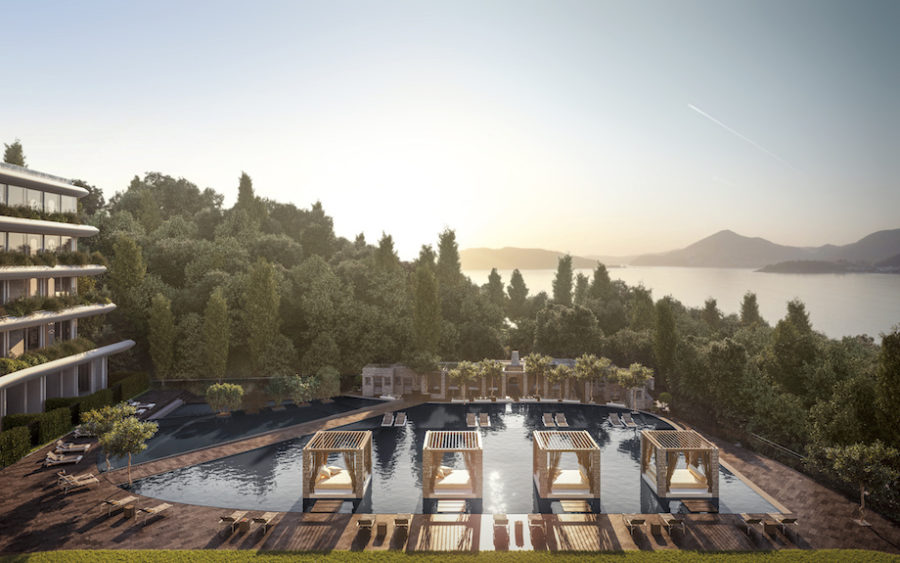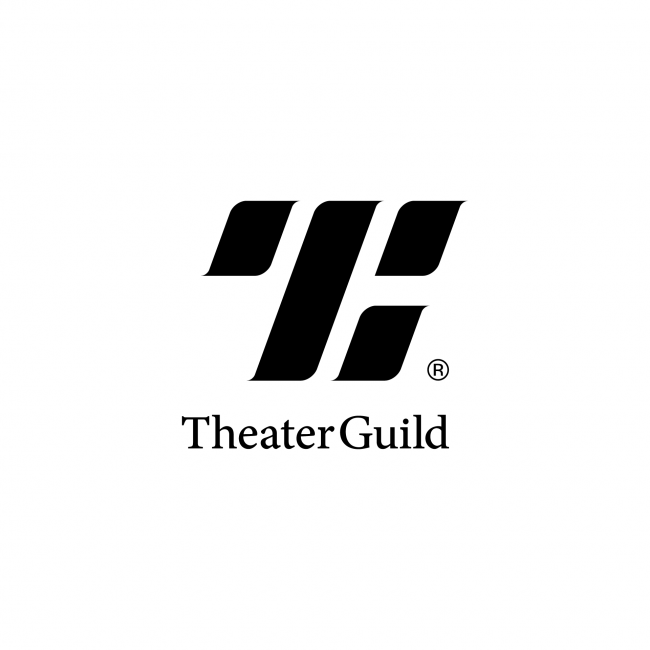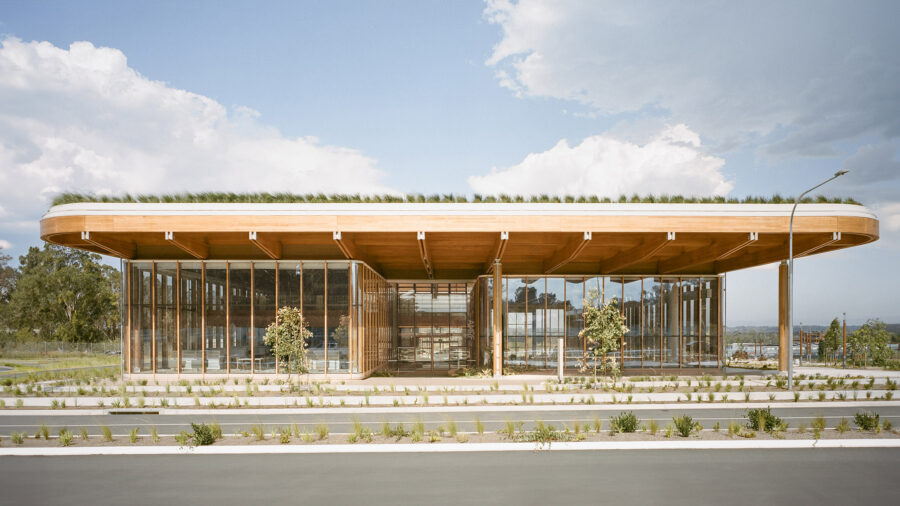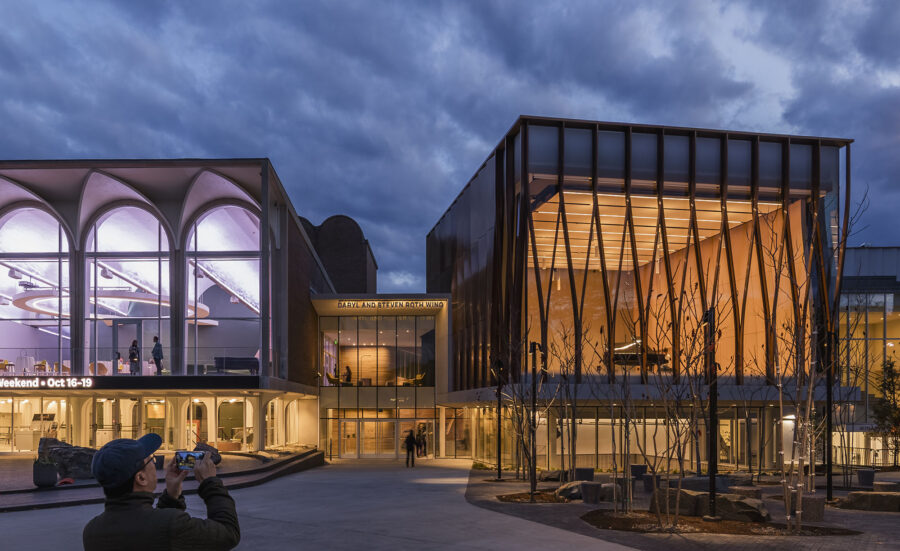![[Report]コールテン鋼の〈笹塚緑道公衆トイレ〉が笹塚駅前に登場!トイレの専門家がデザインした日本財団「THE TOKYO TOILET」プロジェクトの16カ所目のトイレ](https://magazine-asset.tecture.jp/wpcms/wp-content/uploads/2023/03/29234532/20230310sasaduka-toilet_01-2endo3678-900x660.jpeg)
CULTURE


©︎ Supreme Committee for Delivery and Legacy of the 2022 FIFA World Cup QatarTM

© Hufton+Crow
〈アル・ジャヌーブ・スタジアム(AL Janoub Stadium & Precinct)〉は、FIFAワールドカップカタール2022のためにザハ・ハディド・アーキテクツ(Zaha Hadid Architects)より設計されたスタジアムです。
敷地であるカタールの沿岸都市アル=ワクラにおける伝統的な帆船をモチーフとしたデザインとなっていて、ひだ状のファサードと必要に合わせて帆のように展開するプリーツ加工した膜が一体化する建築です。
このスタジアムは40,000人を収容可能であり、ワールドカップ終了後はカタール国内リーグのプロサッカーチーム「アル=ワクラ・スポーツクラブ」のホームグラウンドとして利用するため、20,000人収容のレガシーモードに縮小することができます。
(以下、Zaha Hadid Architectsから提供されたプレスキットのテキストの抄訳)
©︎ Supreme Committee for Delivery and Legacy of the 2022 FIFA World Cup QatarTM
2019年5月16日、国内サッカーリーグ「カタール・スターズ」のアミールカップ決勝戦の開催を機にオープンした〈アル・ジャヌーブ・スタジアム〉は、FIFAワールドカップカタール2022のために設計された最初のスタジアムである。
ザハ・ハディド・アーキテクツは、総合エンジニアリング企業であるエイコム(Aecom)とともに、2013年3月からスタジアムと新しい街区の設計を開始した。

©︎ Supreme Committee for Delivery and Legacy of the 2022 FIFA World Cup QatarTM

©︎ Supreme Committee for Delivery and Legacy of the 2022 FIFA World Cup QatarTM
席数を縮小し大会後の運用に適応するスタジアム
カタールの首都ドーハから南に23km、新ドーハメトロのレッドラインでつながる沿岸部の都市アル=ワクラに位置する〈アル・ジャヌーブ・スタジアム〉では、ワールドカップの8つの会場の1つとして大会のグループリーグと準々決勝の試合が行われる。
ワールドカップで使用する40,000人収容のスタジアムは、大会の終了後は20,000人収容のレガシーモードに縮小することが求められた。20,000席というのは、カタール国内リーグのプロサッカーチーム「アル=ワクラ・スポーツクラブ」のホームグラウンドとして利用する際に最適なキャパシティである。
©︎ Supreme Committee for Delivery and Legacy of the 2022 FIFA World Cup QatarTM
縮小可能とするための仮設席は、大会後にスポーツインフラを必要とする国へ輸送するために、取り外し可能な設計となっている。
ワールドカップのトーナメントモードの追加収容人数には、座席の他にも売店などの更なる仮設施設が必要である。これらは、レガシーモードにおけるスタジアムの常設部分の外側に仮設として建設されている。

© Hufton+Crow

© Hufton+Crow
ひだ状の外壁と一体化する、帆のように展開する膜
このスタジアムは、シュライヒ・ベルガーマン・パートナー(Schlaich Bergermann Partner)によって設計された開閉可能な屋根と太陽光発電による冷却システムにより、カタールの夏季でも使用できるようになっている。
屋根はプリーツ加工された膜とケーブルで構成され、外壁と一体化したデザインとなっている。屋根はフィールドの上を覆う帆のように展開し、夏のサッカーに最適な環境をつくり出す。選手と観客の快適性を確保するため、パッシブデザインの原則に加えコンピュータによるモデリングと風洞実験により、スタジアム外皮の効果を最大限に高めることができた。

© Hufton+Crow

© Hufton+Crow
スタジアムが海岸沿いの都市にあることから、クライアントからはこの地の海洋遺産、特に伝統的な帆船である「ダウ船」をデザインに反映させることが求められた。この要望に対しザハ・ハディド・アーキテクツは、これらの文化的背景を抽象化し、気候や状況、サッカースタジアムの機能要件に対応した実用的なデザインにより応えている。
元となった要素を抽象化することにより、サッカースタジアムにふさわしい新たなものに変換している。また抽象化することで文化的な引用をどのように読み取るかなど、複数の解釈を可能にしている。

© Hufton+Crow
スタジアムの屋根のデザインは日陰や空間をつくり出すため、逆さにした身を寄せ合うダウ船を抽象化したものである。このコンセプトはスタジアムの外壁の形状やディテール、厳選された素材に表れており、ダウ船の船体内部構造を反映した屋根の梁構造もその1つとなっている。
外側に傾斜し、上部は先細るスタジアムのファサードは、ダウ船の帆を連想させるデザインになっている。 また、スタジアムの大きく張り出した軒には、ダウ船で使用される木材の要素を模した金属製の短尺状の外装が組み込まれており、ダウ船のイメージをさらに強調している。

© Hufton+Crow
スタジアムを構成する不透明な屋根と壁は、プリーツ状の断面となっている。これはアラビア独自のモチーフと文字に由来するものであり、外壁に質感を与え、スタジアムのユニークな幾何学的形状を強調することにもつながっている。
屋根と壁には白色、軒下には濃い色を使用し、下層のガラス面に施された装飾的な格子状のスクリーンプリントは日除けとしても機能する。

© Hufton+Crow

© Hufton+Crow
外壁の色彩は幾何学的なフォルムと調和し、外壁の立体感を強調する。 白い屋根の外装材は貝殻を思わせる光沢のある表面仕上げとし、建物外壁のプリーツを強調している。
また、エンボス加工を施した軒天とガラス面の格子状のスクリーンプリントは、メタリックブロンズ色とすることでデザインに豊かさと深みを与えている。 メタリックブロンズ色は、イスラムの伝統工芸へのオマージュでもある。

© Hufton+Crow

© Hufton+Crow
〈アル・ジャヌーブ・スタジアム〉は、来訪者を客席の中央部にあるメインエントリーコンコースへと誘導する広大な基壇の上に建っている。この基壇は、スタジアムをランドスケープとつなげることで、そのスケールを小さく見せている。
〈アル・ジャヌーブ・スタジアム〉は、FIFAワールドカップカタール2022の開催期間中はもちろん、その後もアル=ワクラの中心地として残り続ける、記念すべき会場となるだろう。

© Hufton+Crow

© Hufton+Crow

© Hufton+Crow

© Hufton+Crow

©︎ Supreme Committee for Delivery and Legacy of the 2022 FIFA World Cup QatarTM

©︎ Supreme Committee for Delivery and Legacy of the 2022 FIFA World Cup QatarTM












以下、Zaha Hadid Architectsのリリース(英文)です。
AL Janoub Stadium & Precinct
Al Wakrah, QatarDesign Description
Inaugurated on 16 May 2019 by hosting the Amir Cup Final of the Qatar Stars national football league, Al Janoub Stadium was the first new stadium commissioned for the 2022 FIFA World Cup Qatar. Zaha Hadid Architects (ZHA) together with Aecom began designing the stadium along with its new precinct for the city in March 2013. As one of the eight venues for the Qatar World Cup, Al Janoub Stadium will host group and quarter-final matches of the tournament and is located in Al Wakrah, a coastal city 23km south of Doha connected to the capital via the Red Line of the new Doha Metro system.
The client’s brief called for a 40,000-seat football stadium for the 2022 World Cup which could be reduced to a 20,000-seat capacity in its legacy mode following the tournament. 20,000 seats is the optimum capacity for legacy use as the home ground to Al Wakrah Sport Club professional football team of the Qatar Stars national league. These temporary seats have been designed to be demountable and transported to a country in need of sporting infrastructure for post-tournament usage. Further temporary accommodation such as concessions are required for the additional capacity of FIFA World Cup tournament mode. This has been built as a temporary overlay outside the permanent footprint and enclosure of the stadium in its legacy mode.
The stadium has an operable roof designed by Schlaich Bergermann Partner and a cooling system powered by solar harvesting that ensures the stadium can be used during Qatar’s summer months. The operable roof has been designed in sympathy with the cladding using pleated fabric and cables. When its deployed, the roof operates like a sail to cover the oculus above the field of play and create a sheltered environment for football during the summer. Passive design principles along with computer modelling and wind tunnel tests were used to maximise the effectiveness of the stadium enclosure to ensure player and spectator comfort.
Given the stadium’s context within the coastal city of Al Wakrah, the client asked that its design reflect the maritime heritage of its location; in particular, the traditional boat of the region, the dhow. ZHA responded with a design that incorporates these cultural references in an abstracted manner and combines them with practical responses to the climate, context and the functional requirements of a football stadium. The abstraction transforms the literal into something new and appropriate for a football stadium; allowing multiple interpretations of these cultural references both in terms of how they are applied and how they are read.
The stadium’s roof design is an abstraction of the hulls of dhows turned upside-down and huddled together to provide shade and shelter. This is expressed in the stadium’s envelope geometry, details and selected materiality, including the roof’s beam structure that echoes the interior structure of a dhow’s hull.
The facades of the stadium are slanted outwards, tapered in elevation and reminiscent of dhow’s sail. The image of the dhow is further emphasized through the large overhang of the stadium’s eaves that incorporates strips of metal cladding echoing the timber structures used in a dhow.
The stadium’s opaque roof and wall areas are expressed as pleated cross sections. This feature, which has its origins in Arabic motifs and calligraphy, adds texture to the outer shell and also emphasizes the stadium’s unique geometry. The external cladding materials are deliberately selected from a limited palette of materials and choice of colours; namely white for the roof and wall cladding, and darker colours for the areas below the eaves, including the lower level glazed walls with its ornamental lattice screen print that provides shading.
The colour scheme for the external building envelope dovetails with its geometric forms and reinforces the articulation of the outer skin. The roof cladding and opaque surface areas above the eaves are white or off-white in colour with a gloss surface finish that is reminiscent of sea shells and emphasizes the pleats which add texture to the building envelope. The embossed eaves and the lattice screen print of the glazed lower-level facades are metallic bronze in colour, adding a sense of richness and depth to the design. The choice of a bronze metallic finish of these worked surfaces pays homage to the traditions and artistry of Islamic craftsmanship.
The stadium sits on a large landscaped podium that takes visitors from grade to the entry level main entry concourse located at the middle of the seating bowl’s tiers. This podium connects the stadium into the adjacent landscape and reduces its scale. Large parabolic voids within the podium signify different activity zones. On the eastern side, voids allow for the majority of spectators to arrive and depart from the stadium. The north eastern void will include a community market whilst the south eastern void hosts an activity park. To the west, the parabolic void within the podium allows for vehicle access and drop off at grade for the players, officials and dignitaries.
Designed in conjunction with a new precinct so that its sits at the heart of an urban extension of the city, creating community based activities in and around the stadium on non-event days, Al Janoub Stadium will be a memorable venue and destination during the 2022 FIFA World Cup Qatar and afterwards, at the centre of its Al Wakrah community.
Project Team and Data
Client: Supreme Committee for Delivery & Legacy of the 2022 FIFA World Cup Qatar™ZHA Project Team
Architect and Lead Designer: Zaha Hadid Architects
Design: Zaha Hadid, Patrik Schumacher
Project Director: Jim Heverin
Project Associate / Project Architect: Johannes Hoffmann
Project Team: Annarita Papeschi, Andreas Urff, Antonio Monserrat, Cynthia Du, Edgar Payan, Ermis Chavaltzi, Fernando Poucell, Ganesh Nimmala, George King, Ho-Ping Hsia, Irene Guerra, Jan Klaska, Junyi Wang, Karim Muallem, Karoly Markos, Ming Cheong, Moa Carlsson, Mohamed Al-Jubori, Nastassia Linau, Paulo Flores, Peter Irmscher, Rafael Portillo, Stephane Vallotton, Thomas Soo, Vincent Konate, Yeena Yun, Wen-Kai Li (Kevin)Consultants
Lead Consultant: Aecom
Operable Roof Design: Schlaich Bergermann Partner
Main Contractor: Joint venture between MIDMAC, Sixco and PORR Qatar.
Project Manager: KEO International Consultants.
Structural Steel: SOLB26 (Qatar)
Aluminium Façade & Roof Panels: Qatar National Aluminium Panel Company
Seating: Coastal Qatar
Turf: Urban Concept (Qatar)
Cooling Consultant: Dr Saud Abdul-Ghani, College of Engineering, Qatar UniversityProject Data
Design: March 2013 – April 2014
Start date on site: May 2014
Completion: May 2019
Stadium length (legacy mode): 275m
Stadium width (legacy mode): 225m
Roof maximum height: 56m above playing surface
Roof’s central oculus beam located 50m above playing surface
Roof’s central oculus beam length: 92m
Operable fabric roof material: PVC Titanium O2 double side coated membrane
Operable fabric roof closes in 30-minutes via cablesNew Al Wakrah City precinct including Al Janoub stadium: 58 hectares (585,000m²)
New Al Wakrah City precinct incorporates:
・School
・Community marketplace
・Cycling and running tracks
・90,000 m² landscaped park with pedestrian-friendly spaces to encourage exercise
・Horse-riding trails
・Multipurpose indoor arena
・Mosque
・Wedding Hall
「AL Janoub Stadium」Zaha Hadid Architects 公式サイト
https://www.zaha-hadid.com/architecture/al-wakrah-stadium/




![[大阪・関西万博]主要・共用施設紹介_物販棟](https://magazine-asset.tecture.jp/wpcms/wp-content/uploads/2025/06/23000243/9a5bbeac0d29ec0d4da57f32de05ac09-900x600.jpg)




